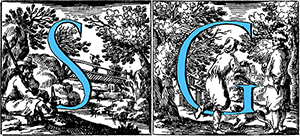
CARLEVARIJS Luca
(Udine 1663 – Venice 1730)
Italian painter and engraver, born in a wealthy Friulian family, who already owned a fief in the 16th century.
His father, Giovanni Leonardo, was considered one of the most distinguished local artists of his time. Only a few works of the paternal activities in architecture and sculpture actually remain, including a drawing divided into six subdivisions entitled ‘Vedute prospettiche di Udine’, almost an omen of the child’s vocation.
In 1679, at the age of sixteen, Luca moved to Venice with his sister Cassandra, taking accommodation near Palazzo Zenobio, a residence of an important family of Veronese origin from which he will have help and protection.
Some time later, he stayed in Rome, exerting himself in the landscape views and was also attracted to the antique style of Dutch painters and the theme of the everyday life. During the Roman period his landscape and architectural vision was influenced by Gaspar van Wittel (Vanvitelli) and, to a lesser degree, by Salvator Rosa.
In 1699 he married Giovanna, daughter of Bishop Bastian Succhietti, who died at only 27 and from whom he had four children.
In 1703 he published a series of 101 etchings (expanded to 104 in subsequent editions), dedicated to Doge Alvise Mocenigo, titled ‘Le fabriche, e vedute di Venetia disegnate, poste in prospettiva et intagliate da Luca Carlevariis con privilegii’,, whose preparatory drawings are kept at the British Museum.
With its etchings and his paintings of views and whimsical (with sea ports, ancient ruins, palaces, streets and plazas animated by scenes and characters of daily life), he dominated the Venetian market up to the end of the second decade of the 18th century, until he was overtaken by his disciple Antonio Canal (called Canaletto).
He has been the pioneer of Venetian Vedutists of the 18th century. Carlevarjis represented the lagoon city with documentary fidelity, not only by his architectural perspectives, or by innovative tools such as the optical chamber, but also participating in the reality of what sorrounded him.
In 1728 he had a form of progressive paralysis that caused his death two years later.

